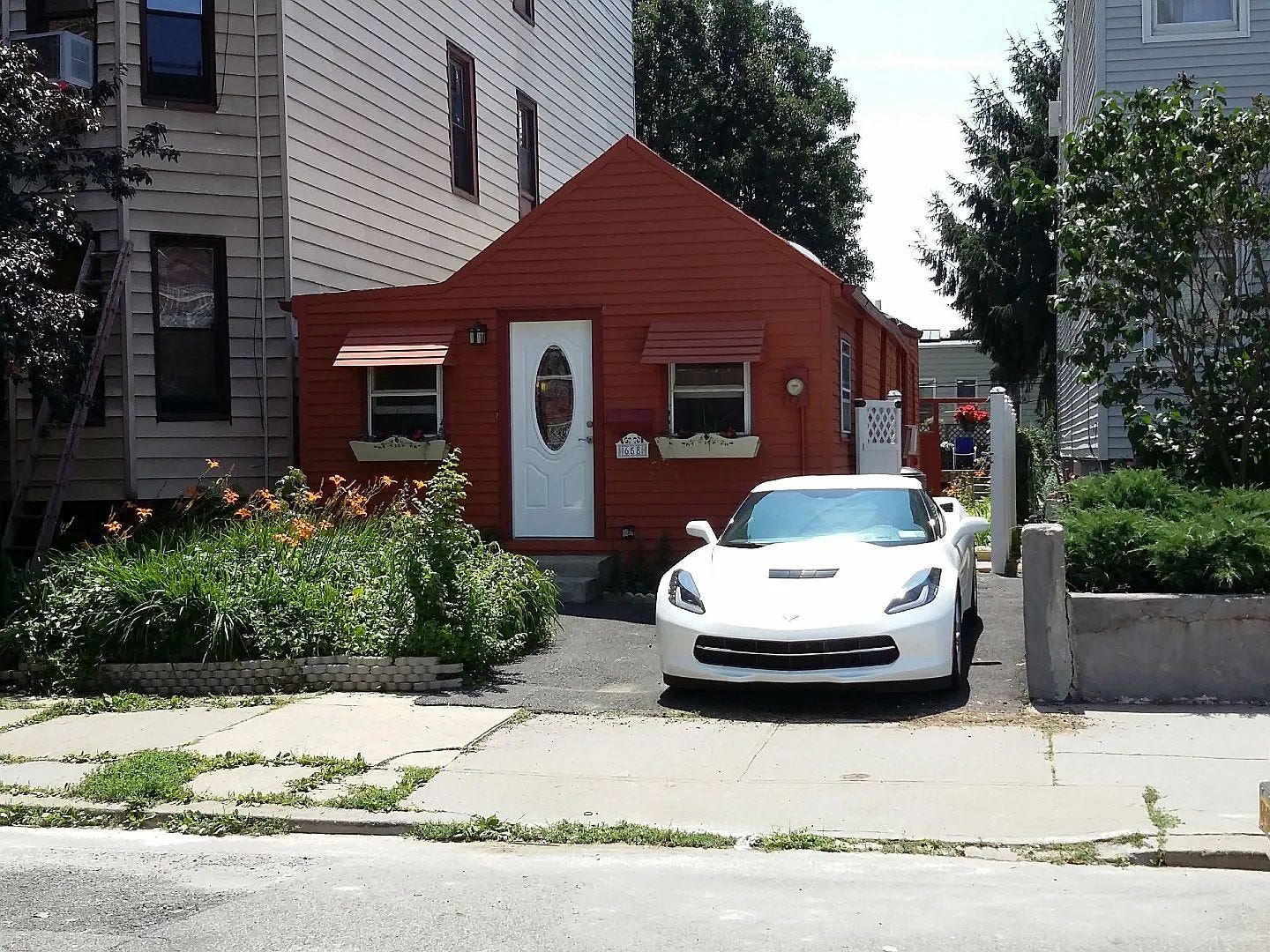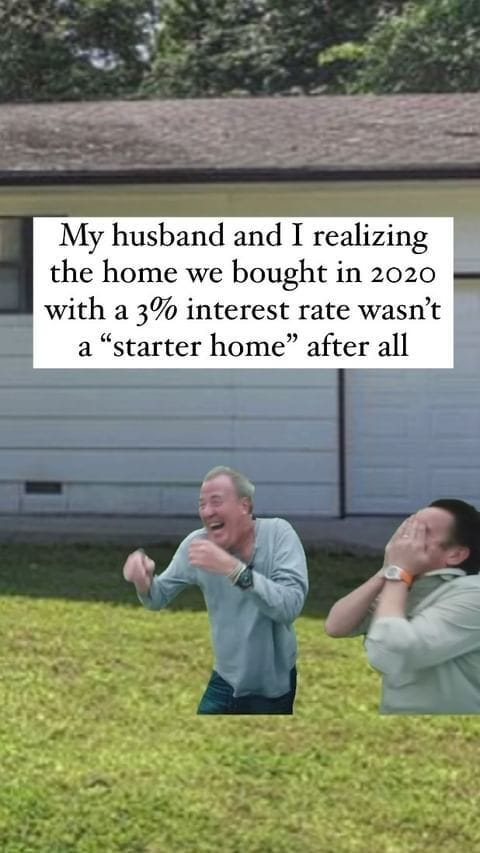When all the houses are $1 million, where are we supposed to live?
Trying to feel good about staying put
Hello, and welcome to The Purse! This week I’m writing about expensive homes, which feels a little weird given the devastation in Maui. I struggle sometimes to feel OK about writing on these privileged problems when there’s so much poverty and tragedy in the world. I honestly don’t know how to reconcile this other than trying to take my personal disappointments in stride, be immensely grateful for what I do have, and help those in need as much as I can (though I’m sure I can do more).
I’m adding a link here with some resources for how to help victims of the Maui fires. If you also want to help a little closer to home, Little Essentials is a great organization that provides kids in need with clothes and supplies. And if you have an organization raising money that you’d like me to call out in future newsletters, please reach out. I’m happy to help if I can.
** Sponsored**
If you're a six-figure earner living in a metropolitan city, chances are you're a HENRY [High Earner Not Rich Yet]. We get it—you splurge for Equinox, but you shop at Trader Joe's. You want to retire some day, but you don’t want someone telling you to cut back on your lifestyle today.
Work one-on-one with a Stash Wealth Financial Advisor and walk away with an easy to implement financial plan built around your lifestyle plus answers to all of your burning money questions.
Exclusively for The Purse subscribers:
$100 off The Stash Plan when you use code "THEPURSE" at checkout.
Last week, my kid had a friend over to play, and Ken and I spent the whole time trying to wrangle these gangly, restless seven-year-olds who suddenly seem way too big for our apartment. They wanted to throw a ball or play with plastic swords or just bounce off the walls as kids do, but in our 500-square-foot kitchen/living/dining area, there’s no wide-open spaces for such activities. Do I let them sword fight and risk breaking something (the stereo, the TV, my prized ’60s-era East German pottery), or do I turn into Mean Mama (my alter ego) and ask them to PLEASE PLAY SOMETHING ELSE.
My kid’s bedroom isn’t exactly a refuge for him either. It’s 10 by 10 at best, crammed full of toys and shelves to hold the toys with maybe a five-foot square in the middle of the room to play. I don’t blame him for not wanting to spend his time in there, though I’m simultaneously jealous and frustrated that he’s truly the only person in this household with his own room, and he doesn’t even use it. (Don’t get me started on my toy problem—that’s a post for another day.)
All the while, Ken and I are having our usual heated discussion over how long we can stay in our apartment. When we bought it seven years ago, it was the perfect size for a couple with a newborn. We even made it through the pandemic with both of us working from home without feeling too much strain (though at some point, I bought every bin available at the Container Store in an effort to organize). But as our kid gets bigger, we’ve started to have more conversations about looking for a bigger place. And when I had a full-time job, my hobby was browsing listings on Zillow with a kind of vague goal of moving someday.
I love a good real estate daydream. I’m one of those people who whips out the Zillow app on vacation and imagines what it would be like to live wherever we’re visiting. Unfortunately, buying a new home in 2023 feels like more of a crossover between a fantasy and a nightmare. Home prices are through the roof and so are mortgage rates. We might need a bigger apartment, but it’s hard to imagine we could afford one, at least if we want to stay in our corner of Brooklyn.
It’s wild to me that if I want to get a slightly bigger apartment—I’m talking about adding an additional bathroom, forget about a third bedroom—I need to spend well over $1 million. How did we get here? I’m not even looking in the so-called “fashionable” parts of Brooklyn. It’s hard to make that math work, that your mortgage essentially doubles every time you add a bathroom.
New York City is notoriously expensive, so some of you might be rolling your eyes and telling me to move to the suburbs. But I’m not just talking about million-dollar homes with my Brooklyn friends. All across the country, the cost of housing is insane. A family friend’s house in Dallas sold for $400,000 in 2020 and is back on the market after a hack-y renovation with a price tag of $800,000. My brother sent our family group chat a Zillow listing for a home where he lives in Eugene, Ore. The price went from roughly $500k in 2017 to $1.2 million earlier this year. (Yes, my whole family is obsessed with real estate. It’s a shared pastime.)
Much has been made about the death of the starter home, the terrible cost-of-living crisis that’s hitting renters across America, and the problematic zoning laws being upheld by wealthy homeowners who refuse to allow more affordable housing to be built in their communities. Homeownership is supposed to be a path to wealth, but as things stand right now, it feels like you already have to be rich to get on that path in the first place.
Unfortunately, barring some strange turn of events, it’s not likely the cost of housing will go down anytime soon—especially in New York City. (Given how weird the last few years have been, I’m definitely not saying it’s impossible!) So where does that leave us? Working our butts off trying to get to a place where we can comfortably afford a million-dollar home? Or staying put in our small apartment and making it work. It’s hard to know what’s the right move.
It’s nice to have a small mortgage. It allows us to spend money on other things (last year, a lot of new clothes and travel, TBH), and it’s made it easier for us to afford this career break I’m taking. If we were to buy a more expensive home, we’d have to prioritize paying a bigger monthly mortgage over everything else. And I’m not sure I want to. It’s like when we bought our car two years ago, and for $100 more a month, we could have added a few more bells and whistles, like heated seats. But at the end of the day, I just didn’t want to spend more on car payments, and I decided I was OK with a cold butt. Maybe I should be OK with a small apartment, too?
It also feels insane that Ken and I even have conversations about buying something so expensive. We’re not rich! (And for the record, we definitely can’t afford it at the moment.) When I look around at all my friends with million-dollar homes, I wouldn’t describe them as rich either. For the most part, they don’t drive luxury cars, wear designer clothes, or take European vacations. (Well, there are some who take European vacations, but they’re not blinged-out Instagram-worthy bonanzas.)
In much of Brooklyn, $1 million doesn’t go very far. I think a part of me still imagines a million-dollar home as a palatial mansion with a swimming pool and a multi-car garage. Not two bedrooms, two baths squeezed into 900 square feet. (And really, if you want that, it will cost you closer $1.4 million—even more in a fancier neighborhood.) But nearly anywhere you go in this country, a million isn’t buying you a mansion anymore. If you want to feel really depressed, look for housing around Silicon Valley in the $1 million range.
In an attempt to make sense of this housing madness, I called up my favorite real estate agent, Heather McMaster, who helped me and Ken sell our last apartment and buy this one. I wanted to know how her clients are feeling about the market—and who’s able to afford these crazy expensive homes. She writes a regular newsletter where she discusses what she’s seeing in the Brooklyn housing market, and I knew she’d be honest with me.
Heather says she sees a lot of people sitting on the sidelines, hoping for mortgage rates to come down, but she doesn’t think that will happen for a bit. There’s also an argument to be made that a 6% mortgage rate isn’t terrible—it’s certainly been higher. According to Freddie Mac, 30-year fixed-rate mortgages averaged 7.74% between April 1971 and June 2023. And homeowners are always encouraged to focus on the long term—you can always refinance later if/when rates do drop. Heather even mentioned some mortgage brokers are offering buyers their first refi for free.
But it’s especially tough, Heather admits, for people like me and Ken, who have a 3.5% mortgage rate and comfortable monthly housing payments. If we wanted to sell, she says, we’d get a good price—in part because there’s so little inventory, and the market is strong for two-bedroom apartments. But buying that bigger apartment means taking on a higher mortgage rate, which makes all of it that much more expensive. And that’s where so many of us get hung up. It’s hard to give up that low APR!
At the same time I’m lamenting the high mortgage rates and expensive housing, I’m also watching yet another mega condo tower sprout up in my neighborhood, and I wonder, as always, who can afford these homes? It’s the predictable (my word, not Heather’s) mix of lawyers, people who work in finance and tech, and folks with family money, she says. But also, Heather adds, a lot of people who’ve just managed to save.
From personal experience, I’ll also add that it’s a whole lot easier to imagine upgrading from, say, a $400k apartment to a $750k apartment—especially when you’ve got equity that you can apply to the next down payment—than it is trying to imagine buying a $1 million condo on your first trip to the rodeo. It’s always been difficult to be middle class in NYC. But it’s still frustrating that there never seems to be a good solution to the affordable housing problem that plagues so many New Yorkers and eventually drives many of them out of the city altogether.
In case you’re curious just how much home you can afford—a fun game for sure!—Bankrate has a good mortgage calculator. Most financial advisors recommend following the Rule of 28/36: You shouldn’t spend more than 28% of your monthly income on housing costs and no more than 36% should go to debt payments overall. (This is hard to do in NYC, and other financial advisors give more wiggle room.)
Let’s use the $1.6 million brownstone a few streets over that I toured one day on a whim. A 20% downpayment is around $300k, and the monthly payments would be roughly $10,000 (oof) including insurance and taxes. We’d need to be bringing in around $37,000 a month to comfortably afford the home, which is an annual salary of $440,000 after taxes. Let’s just round up and say we need to be making half a million a year to buy a $1.6 million house. And we need to make that every year for 30 years if that’s our “forever” home.
The Purse better start generating some revenue, or else I just need to resign myself to sharing one bathroom with two boys forever.
(Also, that brownstone requires a total gut reno, and we’d need at least another half a million to fix it up. So!)
The truth is, I don’t really want a whole house. I grew up in a rambling old house, and something was always breaking. I love my apartment with its big windows and sweeping views. I love my building super who takes good care of my family. I love not having to take out the trash or shovel the drive when it snows. I’ve never thought of myself as someone who feels pressure to keep up with some theoretical Joneses, so why am I looking at insanely expensive gut jobs wondering how I can make it work? The brain works in mysterious and frustrating ways.
My friend
has a fantastic Substack about small living (appropriately titled, , the same as her beautiful book), and earlier this summer, she wrote about feeling the similar pull of wanting a bigger place, desiring a home with a backyard and an extra room that could be a dedicated office. These wants seem so simple, and yet in New York, they are so expensive. But Laura reminds herself (and her readers) of the importance of finding contentment and happiness in what she’s got. Plus, living small is better for the environment and her personal finances. She writes:“[L]iving with less can actually be desirable. The house would be nice, sure, but it makes me happy to know I have a tiny mortgage payment, that I can save for my retirement, and that if for some reason my husband and I found ourselves out of work suddenly (hello, April 2020) that we would be just fine. A bigger home would take much more time and effort to maintain. I can pretty effectively clean my whole home in an hour and half. In this sense choosing to live small is ‘sustainable’ on a personal level.
“Our culture wants us to want more, but there is a lot to love about choosing less.”
Adulthood is all about making compromises because the truth is most of us can’t afford everything we want. Sometimes, the right choice is a bigger house with a yard in the suburbs or a different city. Sometimes, the right choice is a smaller place in a neighborhood where you’ve built a community you love. Sometimes, you feel good about being house poor because you love your home and you want to stay there for years building memories while your kids grow up. And sometimes you want to prioritize other expenses, like travel and education and dining out every night of the week. No one choice is right or wrong; it’s really up to you to have those hard conversations and make a decision and then try to be OK with whatever you choose, even if sometimes it feels wrong or annoying or disappointing. Hopefully, you’re like Laura, and you find your way back to contentment.
I have no idea what Ken and I will do next, whether we’ll ever earn enough to afford another bathroom, or whether we should move to a different part of the city that’s more affordable. Maybe I should optimize the shit out of this place with California closets and Murphy beds. As long as I’ve got my boys and my pottery, it doesn’t really matter.
xx
Lindsey
p.s. A big thanks to Stash Wealth for sponsoring this edition of The Purse. Book a complimentary call to learn more about how they help HENRYs turn their income into wealth. If you’re interested in sponsoring future issues of The Purse, please reach out!
p.p.s. A belated happy anniversary to my parents, who have lived in homes of all different sizes and states of repair and have somehow managed to stay married for 54 years, through several renovations of total gut jobs that had a lot of potential.






